Few fruits announce the arrival of fall quite like the Fuyu persimmon — those bright orange, glossy orbs that taste like honey and sunshine. Known for their crisp texture and sweet, mild flavor, Fuyu persimmons are a gardener’s delight and a home orchard favorite.
What makes them even more rewarding is that you can easily grow a Fuyu persimmon tree from a bare-root plant, giving you the satisfaction of nurturing a tree from its humble beginnings to its first harvest.
In this post, we’ll explore everything you need to know about planting, growing, and caring for a bare-root Fuyu persimmon tree — from choosing the right variety and preparing the soil to pruning, watering, and enjoying those first juicy fruits. Whether you’re an experienced gardener or a beginner, this guide will help you turn a bare-root stick into a fruit-bearing beauty.
Step 1: Understanding Fuyu Persimmons
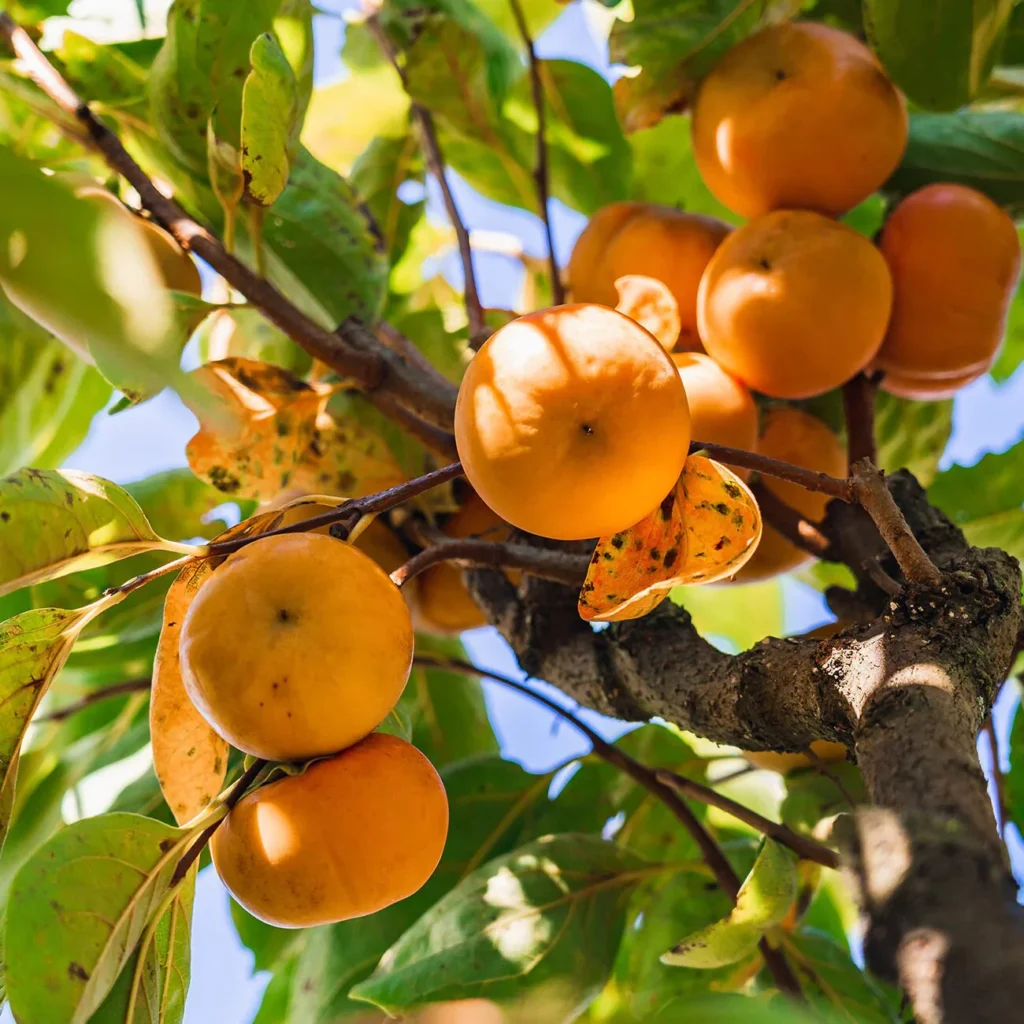
The Fuyu persimmon (Diospyros kaki ‘Fuyu’) is one of the most popular non-astringent varieties. That means you can eat it while it’s still firm, unlike other persimmons that must be soft and fully ripe to lose their bitterness.
Here are some quick facts about Fuyu persimmons:
- Flavor: Sweet, honey-like, and mild.
- Texture: Crisp when firm, tender when soft.
- Shape: Flattened, tomato-like appearance with a deep orange color.
- Harvest season: Late fall to early winter.
- Tree size: Grows 10–20 feet tall, depending on pruning.
Fuyu persimmons thrive in warm, temperate climates and are hardy in USDA zones 7–10. They prefer full sun and well-drained soil, making them perfect for backyard orchards, home gardens, and even large containers.
Step 2: What Is a Bare-Root Tree and Why Choose One?
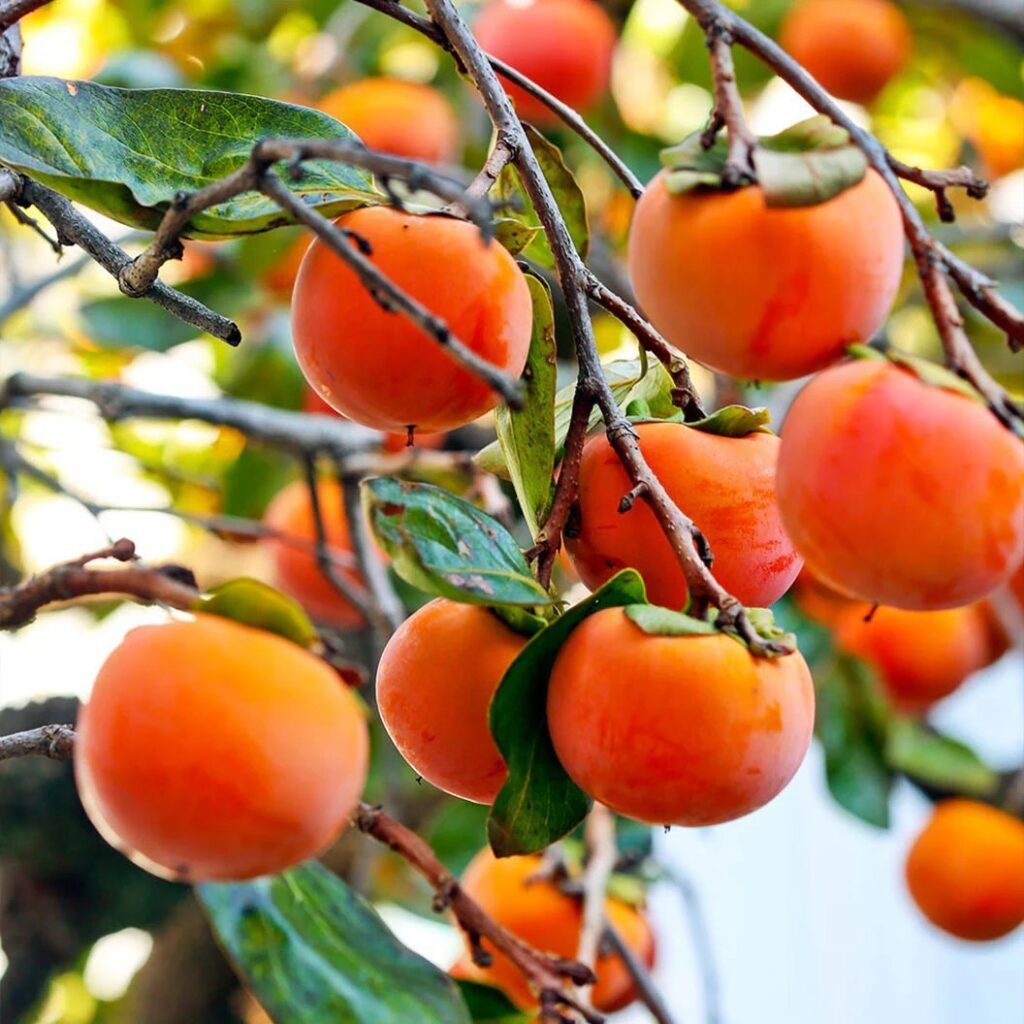
A bare-root tree is exactly what it sounds like — a young tree sold without soil around its roots. These trees are dug from the ground while dormant (usually in late winter or early spring) and shipped directly to gardeners.
Bare-root Fuyu persimmons offer several benefits:
- Affordability: They’re usually cheaper than potted trees.
- Easy transport: Lightweight and simple to handle.
- Faster establishment: Roots grow directly into native soil without pot restrictions.
- Healthier root systems: Less chance of root circling or transplant shock.
The key is to plant the tree while it’s still dormant, ideally between late winter and early spring, before new growth begins.
Step 3: Preparing for Planting
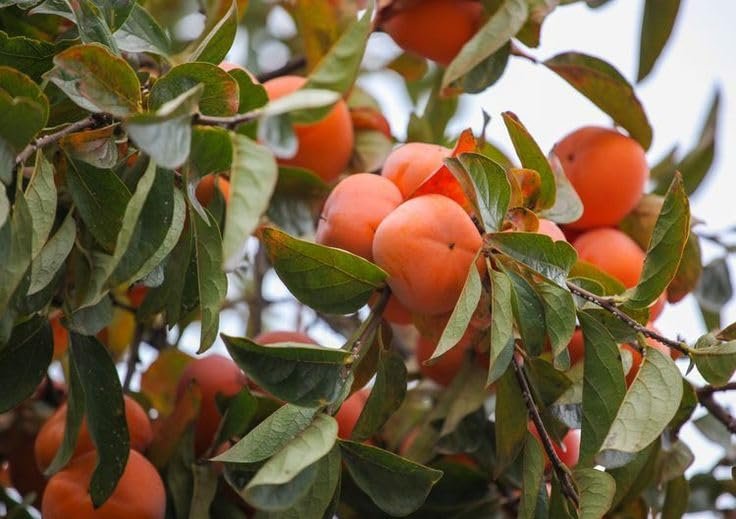
Before planting your Fuyu persimmon bare-root tree, choose the right spot and prepare the soil properly.
Choose the Ideal Location
- Sunlight: Full sun — at least 6 to 8 hours daily.
- Soil: Well-drained loam or sandy soil with pH between 6.0 and 7.5.
- Space: Leave at least 12–15 feet between trees for good air circulation.
Avoid low-lying areas where water might collect, as persimmons dislike “wet feet.” If your soil tends to stay soggy, consider creating a raised mound or planting bed.
Prepare the Soil
- Dig a wide planting hole, about 2–3 times wider than the root spread.
- Loosen the soil at the bottom and mix in organic compost to improve drainage and fertility.
- Avoid using chemical fertilizers at planting time — they can burn young roots.
Step 4: Planting the Bare-Root Fuyu Persimmon
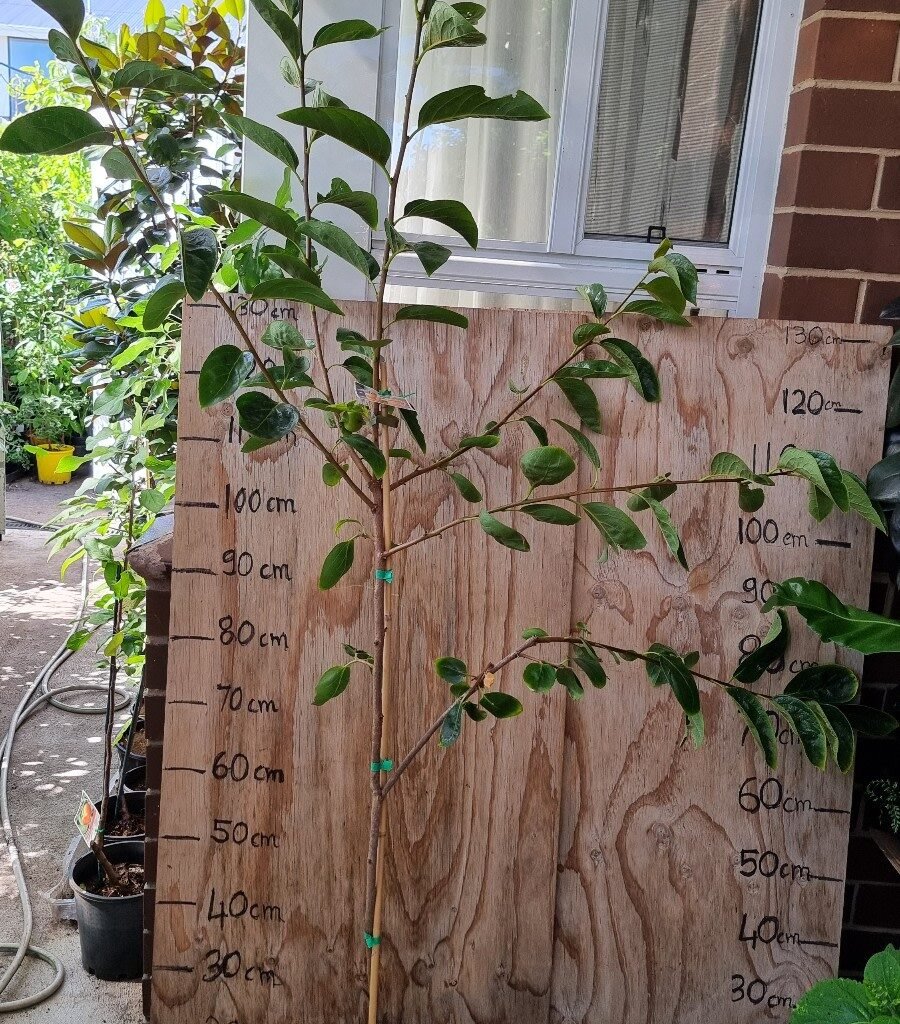
Once your site is ready and the soil is moist but not soggy, it’s time to plant.
- Unpack the tree immediately upon arrival. If you can’t plant it right away, store the roots in moist sawdust or compost to keep them from drying out.
- Inspect the roots. Trim off any damaged or broken ones.
- Soak the roots in a bucket of water for 4–6 hours before planting to rehydrate them.
- Create a mound of soil in the center of the hole. Spread the roots evenly around the mound so they point outward and downward.
- Position the graft union (the swollen area where the scion meets the rootstock) about 2 inches above the soil surface.
- Backfill with soil, firming it gently to remove air pockets.
- Water thoroughly to settle the soil.
Once planted, add a 3-inch layer of mulch around the base, keeping it a few inches away from the trunk. Mulch helps retain moisture, regulate soil temperature, and suppress weeds.
Step 5: Early Care and Watering
For the first year, your bare-root Fuyu persimmon tree’s main goal is to establish its root system. Consistent watering is crucial.
- Water deeply once or twice a week, depending on your soil and climate.
- Avoid shallow watering — it encourages weak surface roots.
- As the tree matures, reduce frequency but increase depth to promote strong roots.
In the first growing season, it’s also wise to protect the young trunk from sunscald by wrapping it with tree guards or white tree paint.
Step 6: Training and Pruning Your Tree
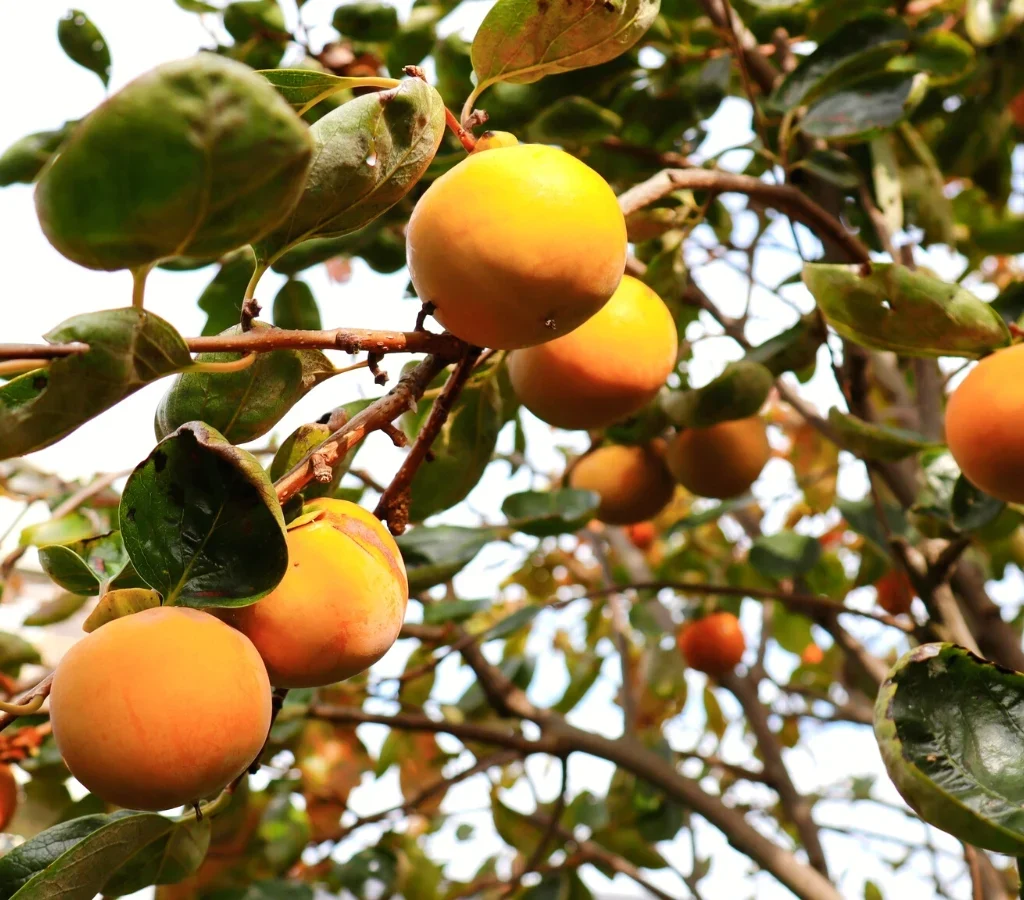
Proper pruning in the early years sets your tree up for strength and productivity.
During Planting:
Cut the main stem back to about 2–3 feet tall. This encourages the growth of side branches that will form the tree’s structure.
In Following Years:
- Train the tree to a modified central leader or open-center shape.
- Remove any suckers, crossing, or weak branches.
- Prune lightly each winter while the tree is dormant to maintain good shape and airflow.
Persimmon trees respond well to pruning but avoid heavy cutting during the growing season, as it may reduce fruit production.
Step 7: Feeding and Fertilizing
In the first year, your Fuyu persimmon won’t need much fertilizer — overfeeding can harm its young roots.
From the second year onward, apply a balanced fertilizer (10-10-10) in early spring before new growth starts. A light feeding every few months can help boost healthy leaf and fruit development.
You can also top-dress the soil with organic compost or aged manure annually to enrich the soil naturally.
Step 8: Blooming and Fruit Development
One of the most exciting moments comes in late spring to early summer, when your Fuyu persimmon tree begins to flower. The small, pale-yellow blossoms often appear after the leaves, signaling that fruit development is on the way.
Fuyu persimmons are self-pollinating, so you don’t need another tree for fruit set — though having more than one can sometimes increase yields.
It may take 2 to 3 years before a bare-root Fuyu tree produces its first fruits, but the wait is worth it. The young green fruits gradually ripen through summer and early fall, turning a deep orange by late autumn.
Step 9: Harvesting and Enjoying Fuyu Persimmons
Fuyu persimmons are ready to harvest when:
- Their color changes to deep orange.
- The fruit feels firm but slightly tender to the touch.
- The calyx (the leafy top) begins to loosen slightly.
Unlike astringent varieties (like Hachiya), you can enjoy Fuyu persimmons while they’re still firm — crisp like an apple, with hints of cinnamon and honey.
You can also let them soften for a richer, custard-like sweetness. Once harvested, they’ll last up to 2 weeks at room temperature or a month in the refrigerator.
Enjoy them fresh, sliced in salads, blended in smoothies, or even roasted or dried for snacks.
Step 10: Seasonal Care and Long-Term Maintenance
A mature Fuyu persimmon tree is fairly low-maintenance, but seasonal care keeps it healthy and productive:
- Spring: Fertilize lightly and check for new growth.
- Summer: Deep water regularly, especially during hot spells.
- Fall: Harvest fruit and prune lightly after leaves drop.
- Winter: Protect roots with mulch in cold regions.
Keep an eye out for pests like scale insects or aphids, though persimmons are generally hardy and pest-resistant.
If you live in cooler zones, consider planting near a sunny wall or in a sheltered spot to protect from frost.
Step 11: The Joy of Growing Fuyu Persimmons
There’s a unique satisfaction in watching a bare-root tree transform into a lush, fruit-bearing beauty. Every season brings visible growth — from the first flush of green leaves to the glossy fruits that brighten the garden in autumn.
Growing Fuyu persimmons connects you to nature’s rhythm — teaching patience, nurturing, and reward. Plus, the tree’s elegant shape and glossy foliage make it a stunning ornamental centerpiece even when it’s not bearing fruit.
Step 12: Health Benefits of Fuyu Persimmons
Beyond their beauty and taste, Fuyu persimmons are a nutritional powerhouse. Each fruit is packed with:
- Vitamin A – for healthy vision and skin.
- Vitamin C – boosts immunity and collagen production.
- Dietary fiber – supports digestion.
- Antioxidants – protect against inflammation and aging.
They’re low in fat and cholesterol-free, making them a guilt-free addition to your fall and winter diet.
Conclusion: From Bare-Root Beginnings to Sweet Rewards
Planting a bare-root Fuyu persimmon is more than just gardening — it’s an act of faith in nature’s slow and steady magic. With patience, proper care, and a touch of seasonal attention, you can transform a dormant root bundle into a thriving tree that rewards you with glowing, golden fruits year after year.
From the day you plant to the moment you take your first bite of sun-ripened Fuyu, the journey is worth every step.
So, whether you have a small backyard or a large orchard, make space for this beautiful tree — and let the sweet taste of Fuyu persimmons remind you that the best things in life take time to grow.
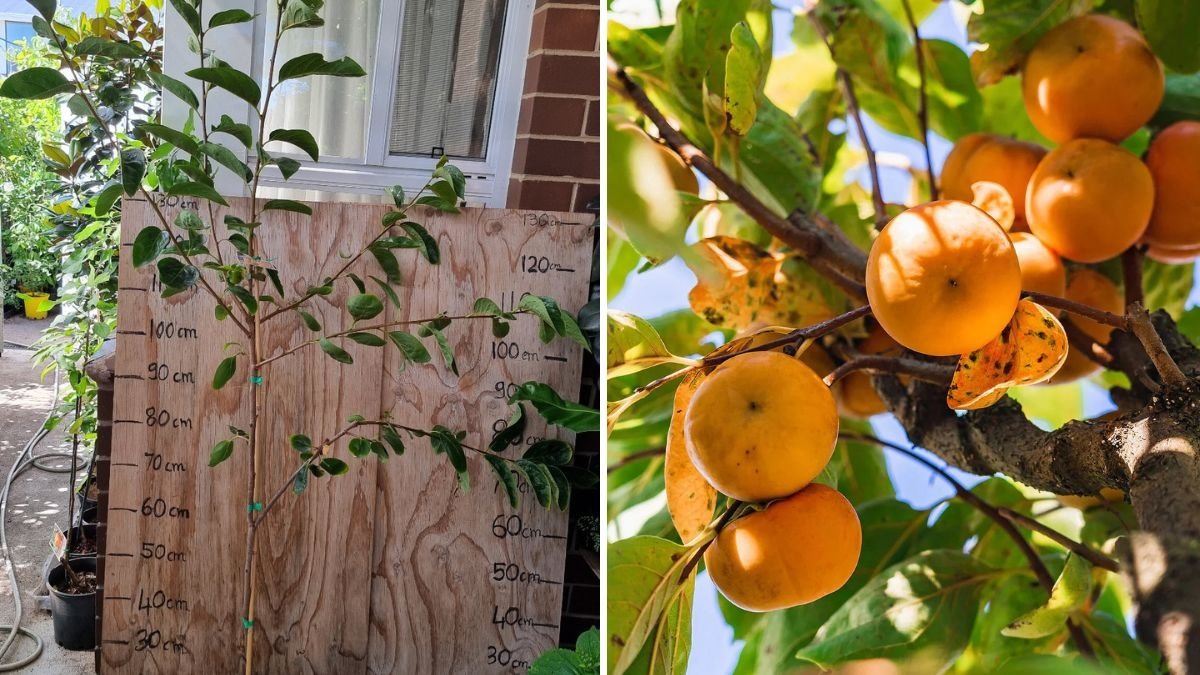


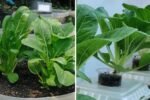


Leave A Comment